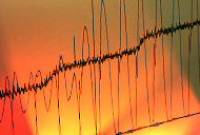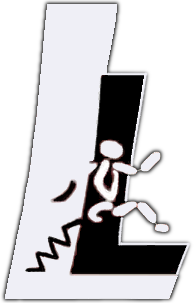Human Gait

With this project, we would like to shed more light on how much and in what way the two typical gaits observed in human locomotion, walking and running, are influenced by the segmentation of the leg. For that, we collected biomechanical data on human subjects walking and running on an instrumented treadmill. Gait-specific patterns of joint coordination may indicate different mechanisms based on compliant legs.
With that knowledge we aim to identify critical events and adjustments within the muscular-skeletal system to achieve desired gait patterns. Results of this research will be used to develop new design criteria and control strategies for legged robots and new approaches in locomotion therapy for rehabilitation. We also aim to provide a basis for more elaborate gait models with segmented legs.
Involved People: André Seyfarth
Subjects

Numerous biomechanical variables are supplied by a number of experiments on human walking and running. These include ground reaction forces, motion analysis, and surface EMG, which are basis for a broad variety of analysis.

The fundamental model for investigating bipedal gaits is the spring-mass model. In this template the legs are represented as massless springs and the body is reduced to a point mass. The spring-mass model is able to show the leg dynamics in both, walking and running.
Walk Run Transitions
Diagrams

Innervation patterns of the vastus medialis muscle during walking at a variety of speeds depending on the individually preferred transition speed (PTS).
Muscle innervation is given relavtive to the maximum innervation ocurred in all of the conducted trials for each subject. Included are 21 subjects (11 female, ten male) with the mean PTS being 2.07 m/s (+/- 0.14 m/s).

Walk-Run-Transition of the bipedal spring-mass model in a Simulink simulation.
The transition is achieved by reducing spring stiffness continuously (40 kN/ms) throughout loading response of the transition step. From midstance stiffness is then increased to induce flight phases. The top two plots show the vertical acceleration applied by the left and right springs on the center of mass (CoM). The vertical CoM trace is shown in the bottom plot.

Thigh segment, knee and ankle joint angles during walking (black) and running (blue) cycles.
Traces are shown as grand means across 21 subjects (11 female, 10 male) for moderate walking speed (75% of preferred transition speed). Contact information is shown in the bottom bar especially for walking, but also the take-off timing of running.

Step frequency and contact time in walking and running at slow speeds depending on the individually preferred transition speed (25-125% PTS).
Both, walking and running have been conducted at the same speeds. Data were averaged within and between subjects.
Publications
- Lipfert S, Günther M, Grimmer S, Seyfarth A. Underlying mechanisms of observed segment kinematics in human gait, XXIInd Congress of the International Society of Biomechanics, July 5-9 Cape Town, South Africa, 2009.
- Lipfert S, Seyfarth A. Elastic legs in walking, XXIst Congress of the International Society of Biomechanics, July 1-5 Taipei, Taiwan, 2007.
- Lipfert S, Seyfarth A. Do walking and running rely on a similar mechanism? European Workshop On Movement Science, May 31 - June 2, Amsterdam, The Netherlands, 2007.
- Lipfert S, Dittrich E, Seyfarth A. A strategy for walk-run transitions at constant speeds, Vth World Congress of Biomechanics, Munich, Germany, 2006.
- Lipfert S, Blum Y, Seyfarth A. Estimation of leg stiffness in human locomotion, Dynamic Walking, Ann Arbor, Michigan, USA, 2006.
- Seyfarth A, Lipfert S. Knee function in walking and running, 3rd International Symposium on Adaptive Motion in Animals and Machines, Ilmenau, Germany, 2005.
- Lipfert S, Seyfarth A, Blickhan R. Leg stiffness in walking and running, XXth congress of the International Society of Biomechanics, Cleveland, Ohio, USA, 2005.
- Seyfarth A, Lipfert S, Rummel J. Hip control in locomotion, XXth congress of the International Society of Biomechanics, Cleveland, Ohio, USA, 2005.
- Lipfert S, Michel J, Geyer H, Seyfarth A. Analysis of walking and running in place, Annual main meeting of the Society for Experimental Biology, Barcelona, Spain, 2005.
- Seyfarth A, Lipfert S, Michel J. Leg function in walking and running in place, Deutsche Gesellschaft für Biomechanik, Münster, Germany, 2004.




